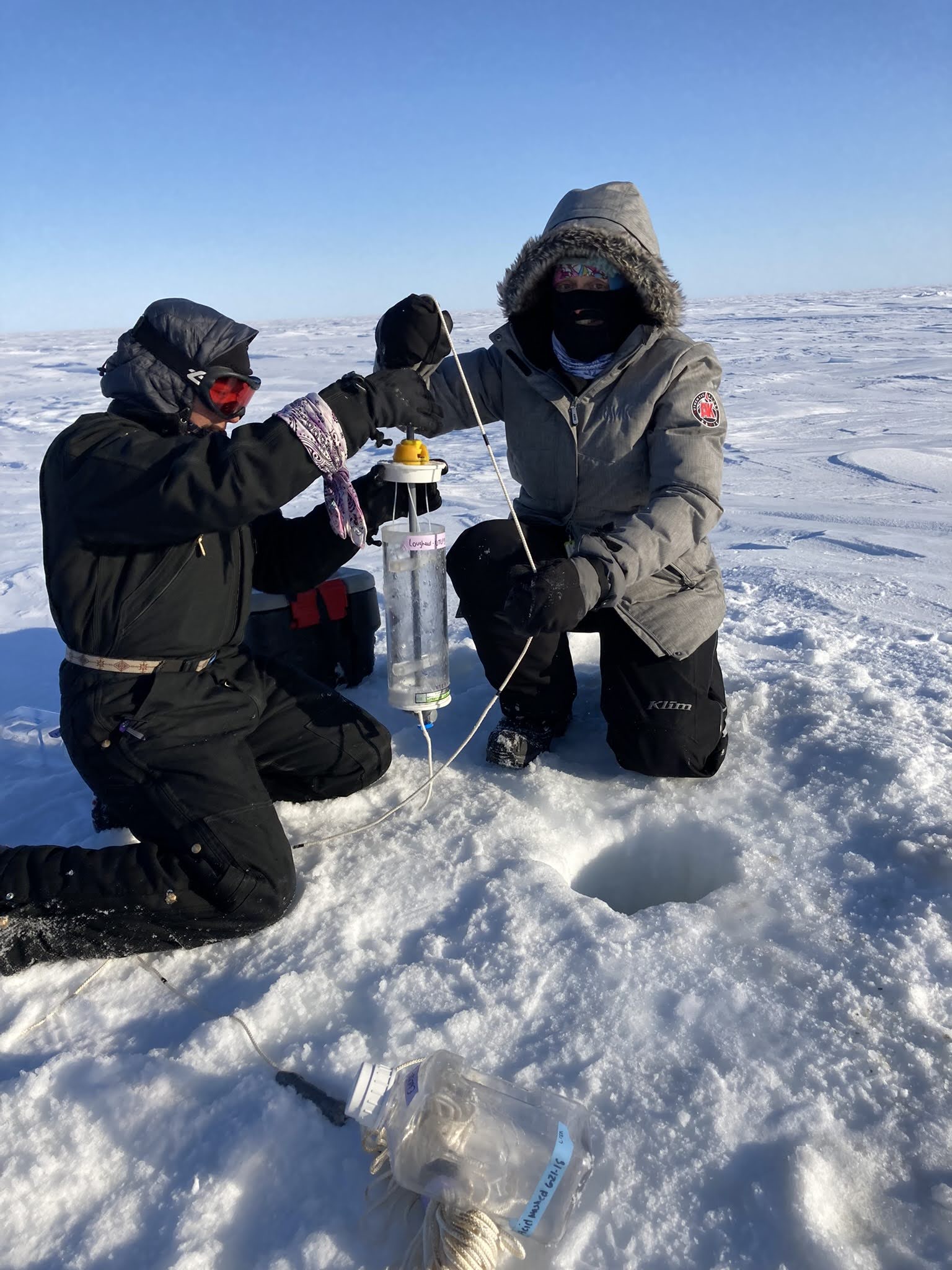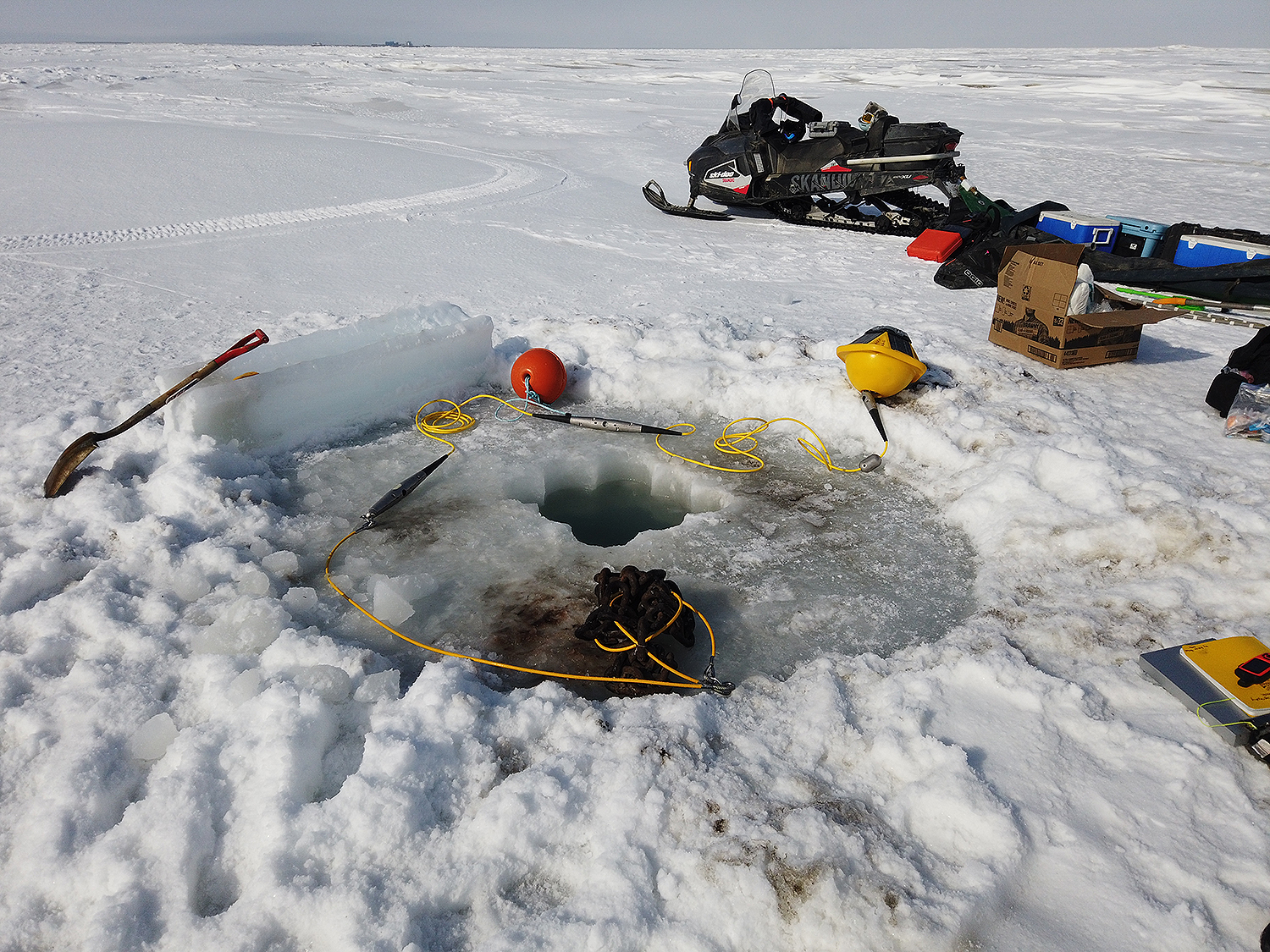
This research is part of the Beaufort Lagoon Ecosystems (BLE) Long-Term Ecological Research (LTER) project, funded by the National Science Foundation with principal investigators from multiple institutions. ACEP’s participation in this project began in 2017 and is scheduled to conclude in June 2023.
Located within lagoons along the northern Alaskan Arctic coast, the BLE LTER project addresses questions about land/sea interactions, biogeochemical and biological composition, seasonal dynamics and long-term changes within these unique ecosystems, using our expertise to serve local communities.
In particular, the ACEP researchers worked with an interdisciplinary team of researchers to address the question: How do changes in ice, freshwater discharges and circulation influence the connectivity between lagoons and shelf waters of the Beaufort Sea?

The team conducted field campaigns annually during three seasons in April, June and August (ice cover, break-up and open water, respectively) from 2018 through 2022. Visited sites include Elson Lagoon in the western Beaufort, Simpson Lagoon and Stefansson Sound in the central Beaufort, and Kaktovik and Jago Lagoons (2018-2019, 2021-2022) to the east.
ACEP researchers collected physical oceanographic measurements and supported other members of the team with data collection and sample processing. Collected data include profiles of salinity, temperature and depth (measured by a Conductivity, Temperature, and Depth, or a CTD sensor); water velocity (measured by an acoustic Doppler current profiler, or an ADCP); and surface and bottom water samples at each site, which were filtered and subsampled for total suspended sediments (TSS), isotope analysis (δ018) and nutrients.
Profiles of water velocity were obtained with an acoustic Doppler velocimeter (ADV) in Eluitkak pass in Elson Lagoon in April 2022 to support an investigation of the under-ice distribution of fish and plankton and their habitat by the North Slope Borough Department of Wildlife Management (NSB-DWM). A Smart Mooring wave buoy by SoFar Ocean was deployed in Stefansson Sound in 2021 to characterize the wave climate and water temperature over the spring and summer and to capture the spring freshet of the Sag River.
Ongoing work includes analysis and public archive of the physical oceanographic data.
Logistical support has been provided by:
- Ukpeaġvik Iñupiat Corporation Science
- Battelle Arctic Research Operations
- Captain Mike Flemming, R/V Ukpik
- Captains Ted and John Dunton, R/V Proteus
- North Slope Borough Department of Wildlife Management
This material is based upon work supported by the National Science Foundation under award# 1656026 (2017-08-01 to 2022-07-31). Any opinions, findings, conclusions or recommendations expressed in the material are those of the author(s) and do not necessarily reflect the views of NSF.





